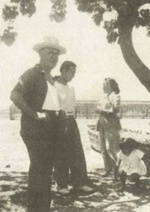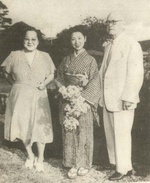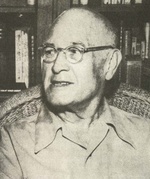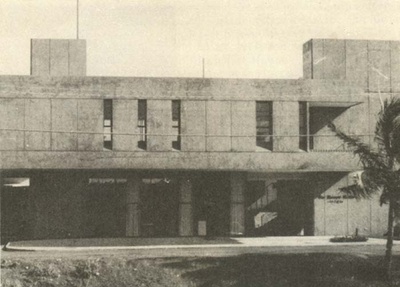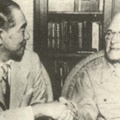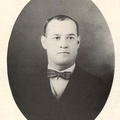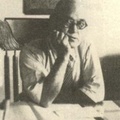>> Part 4
Another Side of Makino
Makino’s life story offers a window to his strong personality. Actually, he was a very compassionate human being, as exemplified over and over again by his actions.
While jailed at Oahu Prison for a few months during the 1909 strike, many of his supporters brought him food to eat, which he shared with three other inmates. Mrs. Makino cooked his favorite foods and delivered them to the prison. However, she never saw her husband.—not because she was prohibited from seeing him, but because Makino himself did not want to see her. His reason became clear only after he had been released. Makino didn’t want to see his wife’s worried and exhausted face, fearing that he might cry. He thought that if his three fellow inmates saw him crying, they might lose their fighting spirit.
Hawaii Hochi employees came to know Makino as “The Thunder”. He is said to have gotten mad at least once a day. When he scolded an employee, he would say something like, “A useless guy like you doesn’t have to come to work from tomorrow”. A wise employee would take a few days off before returning to work. By then, Makino had usually forgiven the mistake and business would return to normal, even being able to laugh off the incident.
Makino once fired an employee because he had reported to work drunk. In this case, Makino refused to allow him to return, so the employee’s wife came to see Makino in person at his office to apologize. Makino called the employee and said, “I don’t care about you, but since I feel sorry for your wife and children, you may return”.
Those who knew Makino said he was especially soft-hearted towards women and children. The Makinos had a great deal of affection for children, although they had none of their own. He took good care of his brother Tsuchiya’s son. While living in Manoa, the Makinos also exhibited deep affection and caring for the three sons of their housekeepers, Mr. And Mrs. Fujise, as well the children of his employees. He would even stop his car to chat with them as they walked to and from school.
Those who knew Makino said he was a man with a warm and embracing personality. They remember his friendship with editor Kosako Hoga who worked for the rival Hawaii Shimpo during the 1909 strike. Hoga had viciously attacked Makino, then president of the Higher Wage Association. When Makino established The Hawaii Hochi in 1912, Hoga then employed by another rival newspaper, The Nippu Jiji – again criticized Makino and his newspaper. Nevertheless, Makino welcomed Hoga into his fold in late 1914 and together, they built The Hawaii Hochi into Hawaii’s finest and largest Japanese language newspaper.
The story of Ichiji Goto, another Hawaii Hochi editor-in-chief, is similar to Hoga’s. While employed by the rival Hawaii Shimpo in 1929, Goto criticized the Hochi many times. But when he decided to come to work at the Hochi, he was welcomed by Makino and treated well. Several other employees left the newspaper, only to return a short time later. Some resigned and returned a number of times. But Makino’s character never allowed him to be vengeful.
Some people were critical to Makino, charging that he was motivated by money. Those kinds of criticism once prompted this response from Sadasuke Terasaki, who had written editorials in The Hawaii Hochi for 50 years.
“If money was Makino’s motivation, he would never have taken on issues as he did. In the case of the Japanese language schools, he fought for six years. He was willing to sacrifice the newspaper in the effort. Filing the appeal in the (Myles) Fukunaga case as well as the appeal for clemency for Fukunaga would never have happened if money was Mr. Makino’s motivation. I have worked with Mr. Makino for over 40 years, since the establishment of The Hawaii Hochi. I know that he is a man of opinion and integrity.”
* This article was originally published by the Hawaii Hochi in commemoration of The Hawaii Hochi, Ltd's 75th Anniversary.
© 1987 Hawaii Hochi, Ltd.


